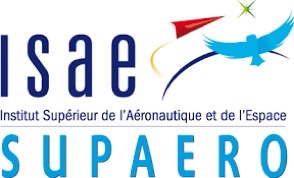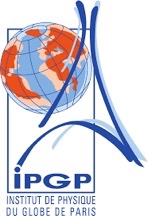Scientific publications
PIONEERS: a 6DoF motion sensor to measure rotation and tides in the Solar System
Valerio Filice, Sébastien Le Maistre, Véronique Dehant, Tim Van Hoolst, Felix Bernauer, Raphael F. Garcia
Earth, Planets and Space, Volume 76, article number 12 (2024)
https://doi.org/10.1186/s40623-023-01951-z
Abstract: Observation of rotation variations and tides provides constraints on the interior properties of celestial bodies. Both can be precisely measured with a 6DoF (Degrees of Freedom) motion sensor placed on their surface. This type of instrument measures rotation rates and linear accelerations in a large frequency band, which includes the frequencies involved in the tides and rotation variations. A novel sensor under development aims to measure rates and accelerations with an amplitude spectral density of 2 µrad s-1 Hz-1/2 and 2- µm s-2 Hz-1/2 respectively in its compact version and three orders of magnitude better (5 nrad s-1 Hz-1/2 and 10 mp s-2 Hz-1/2, respectively) with its high-performance version. Here, we compare these instrument performances with the precision required to measure rotation and tides in order to improve our knowledge of the interior of nine celestial bodies identified as targets for future space missions: Dimorphos, Phobos, Europa, Io, Titan, Enceladus, Triton, the Moon and Mars. Results indicate that Phobos, the Moon, and Mars cannot be investigated with the compact model, but that the interior of the other bodies can be constrained through measurements of rotation rate, and/or centrifugal acceleration, and/or tidal acceleration. We also find that the high-performance prototype instrument is suitable for acceleration measurements for all nine bodies, but not adequate for inferring interior constraints from rotation rate measurements for Triton, the Moon, and Mars. The signatures of the interior in the rotation rate and centrifugal and tidal accelerations also provide scientific requirements for future developments of 6DoF motion sensors for these nine bodies.
This article is open access and can be found
here.
https://doi.org/10.1186/s40623-023-01951-z
Abstract: Observation of rotation variations and tides provides constraints on the interior properties of celestial bodies. Both can be precisely measured with a 6DoF (Degrees of Freedom) motion sensor placed on their surface. This type of instrument measures rotation rates and linear accelerations in a large frequency band, which includes the frequencies involved in the tides and rotation variations. A novel sensor under development aims to measure rates and accelerations with an amplitude spectral density of 2 µrad s-1 Hz-1/2 and 2- µm s-2 Hz-1/2 respectively in its compact version and three orders of magnitude better (5 nrad s-1 Hz-1/2 and 10 mp s-2 Hz-1/2, respectively) with its high-performance version. Here, we compare these instrument performances with the precision required to measure rotation and tides in order to improve our knowledge of the interior of nine celestial bodies identified as targets for future space missions: Dimorphos, Phobos, Europa, Io, Titan, Enceladus, Triton, the Moon and Mars. Results indicate that Phobos, the Moon, and Mars cannot be investigated with the compact model, but that the interior of the other bodies can be constrained through measurements of rotation rate, and/or centrifugal acceleration, and/or tidal acceleration. We also find that the high-performance prototype instrument is suitable for acceleration measurements for all nine bodies, but not adequate for inferring interior constraints from rotation rate measurements for Triton, the Moon, and Mars. The signatures of the interior in the rotation rate and centrifugal and tidal accelerations also provide scientific requirements for future developments of 6DoF motion sensors for these nine bodies.
Efficient wave type fingerprinting and filtering by six-component polarization analysis
David Sollberger, Nicholas Bradley, Pascal Edme, and Johan O. A. Robertsson
Geophys. J. Int., 234, pp. 25-39, Issue 1 (2023)
https://doi.org/10.1093/gji/ggac006
Abstract: We present a technique to automatically classify the wave type of seismic phases that are recorded on a single six-component recording station (measuring both three components of translational and rotational ground motion) at the Earth’s surface. We make use of the fact that each wave type leaves a unique ’fingerprint’ in the six-component motion of the sensor (i.e. the motion is unique for each wave type). This fingerprint can be extracted by performing an eigenanalysis of the data covariance matrix, similar to conventional three-component polarization analysis. To assign a wave type to the fingerprint extracted from the data, we compare it to analytically derived six-component polarization models that are valid for pure-state plane wave arrivals. For efficient classification, we make use of the supervised machine learning method of support vector machines that is trained using data-independent, analytically derived six-component polarization models. This enables the rapid classification of seismic phases in a fully automated fashion, even for large data volumes, such as encountered in land-seismic exploration or ambient noise seismology. Once the wave-type is known, additional wave parameters (velocity, directionality and ellipticity) can be directly extracted from the six-component polarization states without the need to resort to expensive optimization algorithms. We illustrate the benefits of our approach on various real and synthetic data examples for applications such as automated phase picking, aliased ground-roll suppression in land-seismic exploration and the rapid close-to real-time extraction of surface wave dispersion curves from single-station recordings of ambient noise. Additionally, we argue that an initial step of wave type classification is necessary in order to successfully apply the common technique of extracting phase velocities from combined measurements of rotational and translational motion.
This article is open access and can be found
here.
https://doi.org/10.1093/gji/ggac006
Abstract: We present a technique to automatically classify the wave type of seismic phases that are recorded on a single six-component recording station (measuring both three components of translational and rotational ground motion) at the Earth’s surface. We make use of the fact that each wave type leaves a unique ’fingerprint’ in the six-component motion of the sensor (i.e. the motion is unique for each wave type). This fingerprint can be extracted by performing an eigenanalysis of the data covariance matrix, similar to conventional three-component polarization analysis. To assign a wave type to the fingerprint extracted from the data, we compare it to analytically derived six-component polarization models that are valid for pure-state plane wave arrivals. For efficient classification, we make use of the supervised machine learning method of support vector machines that is trained using data-independent, analytically derived six-component polarization models. This enables the rapid classification of seismic phases in a fully automated fashion, even for large data volumes, such as encountered in land-seismic exploration or ambient noise seismology. Once the wave-type is known, additional wave parameters (velocity, directionality and ellipticity) can be directly extracted from the six-component polarization states without the need to resort to expensive optimization algorithms. We illustrate the benefits of our approach on various real and synthetic data examples for applications such as automated phase picking, aliased ground-roll suppression in land-seismic exploration and the rapid close-to real-time extraction of surface wave dispersion curves from single-station recordings of ambient noise. Additionally, we argue that an initial step of wave type classification is necessary in order to successfully apply the common technique of extracting phase velocities from combined measurements of rotational and translational motion.
Anisotropic elastic parameter estimation from multicomponent ground-motion observations: a theoretical study
Sebastian Noe, Shihao Yuan, Jean-Paul Montagner, and Heiner Igel
Geophys. J. Int., 229, 1462–1473 (2022)
https://doi.org/10.1093/gji/ggac006
Abstract: We investigate the potential of multicomponent, single-point ground-motion observations (displacement, rotation and strain) to allow the estimation of near-receiver anisotropic elastic parameters. Based on full-space, plane-wave propagation analysis, we demonstrate that in (locally homogeneous) anisotropic media, the wave propagation direction and the velocities of quasi-P and quasi-S waves can—in principle—be determined from three components of displacements and three components of rotations.Mimicking the situation of a borehole setting, we formulate an inverse problem, estimating the full elastic tensor from multidirectional observations. We show that in the presence of noise it is beneficial to observe additionally a longitudinal strain component (e.g. along the borehole), further constraining the predominantly quasi-P related elastic tensor components.
This article is open access and can be found
here.
https://doi.org/10.1093/gji/ggac006
Abstract: We investigate the potential of multicomponent, single-point ground-motion observations (displacement, rotation and strain) to allow the estimation of near-receiver anisotropic elastic parameters. Based on full-space, plane-wave propagation analysis, we demonstrate that in (locally homogeneous) anisotropic media, the wave propagation direction and the velocities of quasi-P and quasi-S waves can—in principle—be determined from three components of displacements and three components of rotations.Mimicking the situation of a borehole setting, we formulate an inverse problem, estimating the full elastic tensor from multidirectional observations. We show that in the presence of noise it is beneficial to observe additionally a longitudinal strain component (e.g. along the borehole), further constraining the predominantly quasi-P related elastic tensor components.
The Newest Rotaphone Model Design and Preliminary Results from Performance Tests with Active Seismic Sources
Brokešová Johana, Málek Jirí, Vackár Jirí, Bernauer Felix, Wassermann Joachim, Igel Heiner
Sensors 2021, 21, 562 (2021)
https://doi.org/10.3390/s21020562
Abstract: Rotaphone-CY is a six-component short-period seismograph that is capable of the colocated recording of three translational (ground velocity) components along three orthogonal axes and three rotational (rotation rate) components around the three axes in one device. It is a mechanical sensor system utilizing records from elemental sensors (geophones) arranged in parallel pairs to derive differential motions in the pairs. The pairs are attached to a rigid frame that is anchored to the ground. The model design, the latest one among various Rotaphone designs based on the same principle and presented elsewhere, is briefly introduced. The upgrades of the new model are a 32-bit A/D converter, a more precise placing of the geophones to parallel pairs and a better housing, which protects the instrument from external electromagnetic noise. The instrument is still in a developmental stage. It was tested in a field experiment that took place at the Geophysical Observatory in Fürstenfeldbruck (Germany) in November 2019. Four Rotaphones-CY underwent the huddle-testing phase of the experiment as well as the field-deployment phase, in which the instruments were installed in a small-aperture seismic array of a triangular shape. The preliminary results from this active-source experiment are shown. Rotaphone-CY data are verified, in part, by various approaches: mutual comparison of records from four independent Rotaphone-CY instruments, waveform matching according to rotation-to-translation relations, and comparison to array-derived rotations when applicable. The preliminary results are very promising and they suggest the good functionality of the Rotaphone-CY design. It has been proved that the present Rotaphone-CY model is a reliable instrument for measuring short-period seismic rotations of the amplitudes as small as 10-7 rad/s.
This article is open access and can be found
here.
https://doi.org/10.3390/s21020562
Abstract: Rotaphone-CY is a six-component short-period seismograph that is capable of the colocated recording of three translational (ground velocity) components along three orthogonal axes and three rotational (rotation rate) components around the three axes in one device. It is a mechanical sensor system utilizing records from elemental sensors (geophones) arranged in parallel pairs to derive differential motions in the pairs. The pairs are attached to a rigid frame that is anchored to the ground. The model design, the latest one among various Rotaphone designs based on the same principle and presented elsewhere, is briefly introduced. The upgrades of the new model are a 32-bit A/D converter, a more precise placing of the geophones to parallel pairs and a better housing, which protects the instrument from external electromagnetic noise. The instrument is still in a developmental stage. It was tested in a field experiment that took place at the Geophysical Observatory in Fürstenfeldbruck (Germany) in November 2019. Four Rotaphones-CY underwent the huddle-testing phase of the experiment as well as the field-deployment phase, in which the instruments were installed in a small-aperture seismic array of a triangular shape. The preliminary results from this active-source experiment are shown. Rotaphone-CY data are verified, in part, by various approaches: mutual comparison of records from four independent Rotaphone-CY instruments, waveform matching according to rotation-to-translation relations, and comparison to array-derived rotations when applicable. The preliminary results are very promising and they suggest the good functionality of the Rotaphone-CY design. It has been proved that the present Rotaphone-CY model is a reliable instrument for measuring short-period seismic rotations of the amplitudes as small as 10-7 rad/s.
Rotation, Strain, and Translation Sensors Performance Tests with Active Seismic Sources
Felix Bernauer, Kathrin Behnen, Joachim Wassermann, Sven Egdorf, Heiner Igel, Stefanie Donner, Klaus Stammler, Mathias Hoffmann, Pascal Edme, David Sollberger, Cédric Schmelzbach, Johan Robertsson, Patrick Paitz, Jonas Igel, Krystyna Smolinski, Andreas Fichtner, Yara Rossi, Gizem Izgi, Daniel Vollmer, Eva P. S. Eibl, Stefan Buske, Christian Veress, Frederic Guattari, Theo Laudat, Laurent Mattio, Olivie Sèbe, Serge Olivier, Charlie Lallemand, Basil Brunner, Anna T. Kurzych, Michał Dudek, Leszek R. Jaroszewicz, Jerzy K. Kowalski, Piotr A. Bońkowski, Piotr Bobra, Zbigniew Zembaty, Jiří Vackář, Jiří Málek, and Johana Brokesova
Sensors 21(1) 264 (2021)
https://doi.org/10.3390/s21010264
Abstract: Interest in measuring displacement gradients, such as rotation and strain, is growing in many areas of geophysical research. This results in an urgent demand for reliable and field-deployable instruments measuring these quantities. In order to further establish a high-quality standard for rotation and strain measurements in seismology, we organized a comparative sensor test experiment that took place in November 2019 at the Geophysical Observatory of the Ludwig-Maximilians University Munich in Fürstenfeldbruck, Germany. More than 24 different sensors, including three-component and single-component broadband rotational seismometers, six-component strong-motion sensors and Rotaphone systems, as well as the large ring laser gyroscopes ROMY and a Distributed Acoustic Sensing system, were involved in addition to 14 classical broadband seismometers and a 160 channel, 4.5 Hz geophone chain. The experiment consisted of two parts: during the first part, the sensors were co-located in a huddle test recording self-noise and signals from small, nearby explosions. In a second part, the sensors were distributed into the field in various array configurations recording seismic signals that were generated by small amounts of explosive and a Vibroseis truck. This paper presents details on the experimental setup and a first sensor performance comparison focusing on sensor self-noise, signal-to-noise ratios, and waveform similarities for the rotation rate sensors. Most of the sensors show a high level of coherency and waveform similarity within a narrow frequency range between 10 Hz and 20 Hz for recordings from a nearby explosion signal. Sensor as well as experiment design are critically accessed revealing the great need for reliable reference sensors.
This article is open access and can be found
here.
https://doi.org/10.3390/s21010264
Abstract: Interest in measuring displacement gradients, such as rotation and strain, is growing in many areas of geophysical research. This results in an urgent demand for reliable and field-deployable instruments measuring these quantities. In order to further establish a high-quality standard for rotation and strain measurements in seismology, we organized a comparative sensor test experiment that took place in November 2019 at the Geophysical Observatory of the Ludwig-Maximilians University Munich in Fürstenfeldbruck, Germany. More than 24 different sensors, including three-component and single-component broadband rotational seismometers, six-component strong-motion sensors and Rotaphone systems, as well as the large ring laser gyroscopes ROMY and a Distributed Acoustic Sensing system, were involved in addition to 14 classical broadband seismometers and a 160 channel, 4.5 Hz geophone chain. The experiment consisted of two parts: during the first part, the sensors were co-located in a huddle test recording self-noise and signals from small, nearby explosions. In a second part, the sensors were distributed into the field in various array configurations recording seismic signals that were generated by small amounts of explosive and a Vibroseis truck. This paper presents details on the experimental setup and a first sensor performance comparison focusing on sensor self-noise, signal-to-noise ratios, and waveform similarities for the rotation rate sensors. Most of the sensors show a high level of coherency and waveform similarity within a narrow frequency range between 10 Hz and 20 Hz for recordings from a nearby explosion signal. Sensor as well as experiment design are critically accessed revealing the great need for reliable reference sensors.
Seismological Processing of Six Degree-of-Freedom Ground-Motion Data
David Sollberger, Heiner Igel,Cedric Schmelzbach, Pascal Edme, Dirk-Jan van Manen, Felix Bernauer, Shihao Yuan, Joachim Wassermann, Ulrich Schreiber, and Johan O. A. Robertsson
Sensors 20(23) 6904 (2020)
https://doi.org/10.3390/s20236904
Abstract: Recent progress in rotational sensor technology has made it possible to directly measure rotational ground-motion induced by seismic waves. When combined with conventional inertial seismometer recordings, the new sensors allow one to locally observe six degrees of freedom (6DOF) of ground-motion, composed of three orthogonal components of translational motion and three orthogonal components of rotational motion. The applications of such 6DOF measurements are manifold—ranging from wavefield characterization, separation, and reconstruction to the reduction of non-uniqueness in seismic inverse problems—and have the potential to revolutionize the way seismic data are acquired and processed. However, the seismological community has yet to embrace rotational ground-motion as a new observable. The aim of this paper is to give a high-level introduction into the field of 6DOF seismology using illustrative examples and to summarize recent progress made in this relatively young field. It is intended for readers with a general background in seismology. In order to illustrate the seismological value of rotational ground-motion data, we provide the first-ever 6DOF processing example of a teleseismic earthquake recorded on a multicomponent ring laser observatory and demonstrate how wave parameters (phase velocity, propagation direction, and ellipticity angle) and wave types of multiple phases can be automatically estimated using single-station 6DOF processing tools. Python codes to reproduce this processing example are provided in an accompanying Jupyter notebook.
This article is open access and can be found
here.
https://doi.org/10.3390/s20236904
Abstract: Recent progress in rotational sensor technology has made it possible to directly measure rotational ground-motion induced by seismic waves. When combined with conventional inertial seismometer recordings, the new sensors allow one to locally observe six degrees of freedom (6DOF) of ground-motion, composed of three orthogonal components of translational motion and three orthogonal components of rotational motion. The applications of such 6DOF measurements are manifold—ranging from wavefield characterization, separation, and reconstruction to the reduction of non-uniqueness in seismic inverse problems—and have the potential to revolutionize the way seismic data are acquired and processed. However, the seismological community has yet to embrace rotational ground-motion as a new observable. The aim of this paper is to give a high-level introduction into the field of 6DOF seismology using illustrative examples and to summarize recent progress made in this relatively young field. It is intended for readers with a general background in seismology. In order to illustrate the seismological value of rotational ground-motion data, we provide the first-ever 6DOF processing example of a teleseismic earthquake recorded on a multicomponent ring laser observatory and demonstrate how wave parameters (phase velocity, propagation direction, and ellipticity angle) and wave types of multiple phases can be automatically estimated using single-station 6DOF processing tools. Python codes to reproduce this processing example are provided in an accompanying Jupyter notebook.
Exploring planets and asteroids with 6DoF sensors: Utopia and realism
Felix Bernauer, Raphael F. Garcia, Naomi Murdoch, Veronique Dehant, David Sollberger, Cedric Schmelzbach, Simon Stähler, Joachim Wassermann, Heiner Igel, Alexandre Cadu, David Mimoun, Birgit Ritter, Valerio Filice, Özgür Karatekin, Luigi Ferraioli, Johan O. A. Robertsson, Domenico Giardini, Guillaume Lecamp, Frederic Guattari, Jean‑Jacques Bonnefois and Sebastien de Raucourt
Earth, Planets and Space 72, Article number: 191 (2020)
https://doi.org10.1186/s40623-020-01333-9
Abstract: A 6 degrees‑of‑freedom (6DoF) sensor, measuring three components of translational acceleration and three compo‑nents of rotation rate, provides the full history of motion it is exposed to. In Earth sciences 6DoF sensors have shown great potential in exploring the interior of our planet and its seismic sources. In space sciences, apart from naviga‑tion, 6DoF sensors are, up to now, only rarely used to answer scientific questions. As a first step of establishing 6DoF motion sensing deeper into space sciences, this article describes novel scientific approaches based on 6DoF motion sensing with substantial potential for constraining the interior structure of planetary objects and asteroids. Therefore we estimate 6DoF‑signal levels that originate from lander–surface interactions during landing and touchdown, from a body’s rotational dynamics as well as from seismic ground motions. We discuss these signals for an exemplary set of target bodies including Dimorphos, Phobos, Europa, the Earth’s Moon and Mars and compare those to self‑noise levels of state‑of‑the‑art sensors.
This article is open access and can be found
here.
https://doi.org10.1186/s40623-020-01333-9
Abstract: A 6 degrees‑of‑freedom (6DoF) sensor, measuring three components of translational acceleration and three compo‑nents of rotation rate, provides the full history of motion it is exposed to. In Earth sciences 6DoF sensors have shown great potential in exploring the interior of our planet and its seismic sources. In space sciences, apart from naviga‑tion, 6DoF sensors are, up to now, only rarely used to answer scientific questions. As a first step of establishing 6DoF motion sensing deeper into space sciences, this article describes novel scientific approaches based on 6DoF motion sensing with substantial potential for constraining the interior structure of planetary objects and asteroids. Therefore we estimate 6DoF‑signal levels that originate from lander–surface interactions during landing and touchdown, from a body’s rotational dynamics as well as from seismic ground motions. We discuss these signals for an exemplary set of target bodies including Dimorphos, Phobos, Europa, the Earth’s Moon and Mars and compare those to self‑noise levels of state‑of‑the‑art sensors.
Dynamic Tilt Correction Using Direct Rotational Motion Measurements
Felix Bernauer, Joachim Wassermann, and Heiner Igel
Seismological Research Letters (2020) 91 (5): 2872–2880
https://doi.org/10.1785/0220200132
Abstract: Inertial sensors like seismometers or accelerometers are sensitive to tilt motions. In general, from pure acceleration measurements, it is not possible to separate the tilt acceleration from the translational ground acceleration. This can lead to severe misinterpretation of seismograms. Here, we present three different methods that can help solving this problem by correcting translational records for dynamic tilt induced by ground deformation with direct measurements of rotational motions: (1) a simple time-domain method, (2) a frequency-domain method proposed by Crawford and Webb (2000) using a coherence-weighted transfer function between rotation and acceleration, and (3) an adapted frequency-domain method that corrects only those parts of the spectrum with coherence between translational acceleration and rotation angle higher than 0.5. These three methods are discussed in three different experimental settings: (1) a reproducible and precisely known laboratory test using a high-precision tilt table, (2) a synthetic test with a simulated volcanic very-long-period event, and (3) a real data set recorded during the 2018 Mt. Kīlauea caldera collapse. All the three test cases show severe influence of tilt motion on the acceleration measurements. The time-domain method and the adapted frequency-domain method show very similar performance in all three test cases. Those two methods are able to remove the tilt component reliably from the acceleration record.
This article features a video abstract, accessible
here.
https://doi.org/10.1785/0220200132
Abstract: Inertial sensors like seismometers or accelerometers are sensitive to tilt motions. In general, from pure acceleration measurements, it is not possible to separate the tilt acceleration from the translational ground acceleration. This can lead to severe misinterpretation of seismograms. Here, we present three different methods that can help solving this problem by correcting translational records for dynamic tilt induced by ground deformation with direct measurements of rotational motions: (1) a simple time-domain method, (2) a frequency-domain method proposed by Crawford and Webb (2000) using a coherence-weighted transfer function between rotation and acceleration, and (3) an adapted frequency-domain method that corrects only those parts of the spectrum with coherence between translational acceleration and rotation angle higher than 0.5. These three methods are discussed in three different experimental settings: (1) a reproducible and precisely known laboratory test using a high-precision tilt table, (2) a synthetic test with a simulated volcanic very-long-period event, and (3) a real data set recorded during the 2018 Mt. Kīlauea caldera collapse. All the three test cases show severe influence of tilt motion on the acceleration measurements. The time-domain method and the adapted frequency-domain method show very similar performance in all three test cases. Those two methods are able to remove the tilt component reliably from the acceleration record.







